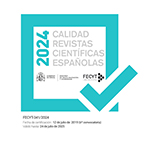The Owl Graziadio and Saba’s "Uccelli": the Construction of Time in "L’orologio" by Carlo Levi
Abstract
This paper aims to shed light on the relevance of the symbolic figure of the owl in Carlo Levi’s paintings, poetry and prose in the Forties and in the Fifties. Often represented in connection with images of clocks, the figure of the owl is strictly related to time, which is a crucial issue in Levi’s novel L’orologio. The relationship between the representations of owl and clocks, therefore , seems to be essential in o rder to ana lyze the novel’s temporality.As for the relationship between the two figures of the owl and the clock, there is evidence of a strong influence which can be retraced to his friend Umberto Saba’s poetry, with a specific reference to Saba’s poetry collection Uccelli (1948). The analysis is based on the intertwin ing of literary and art critic ism, in the attempt to show that Lev i’s mult ifaceted work is based on a trans -medial approach.Downloads
Article download
License
In order to support the global exchange of knowledge, the journal Cuadernos de Filología Italiana is allowing unrestricted access to its content as from its publication in this electronic edition, and as such it is an open-access journal. The originals published in this journal are the property of the Complutense University of Madrid and any reproduction thereof in full or in part must cite the source. All content is distributed under a Creative Commons Attribution 4.0 use and distribution licence (CC BY 4.0). This circumstance must be expressly stated in these terms where necessary. You can view the summary and the complete legal text of the licence.










